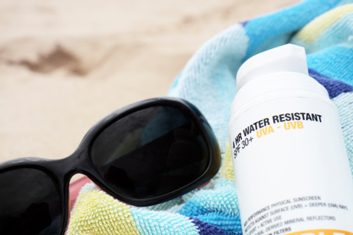
Not your mother’s sunscreen
Gone is the time when wearing sunblock meant a face that was shiny or a body that was slathered in thick white cream. The formulas used today are a far cry from those even just a few seasons ago. “Our products have evolved as consumer needs have evolved,” says Susan Liao, regulatory affairs associate with Johnson & Johnson, Inc., in Markham, Ont. “Many years ago, consumers didn’t know what they do now about what is needed to protect themselves from the sun’s rays.”
Sun protection in a bottle was developed in 1946 by an outdoors-loving chemistry student in Switzerland. An early ingredient was PABA (para-aminobenzoic acid), which causes skin reactions in some users; today, products are widely marketed as PABA-free. That’s just one development. Read on for others.
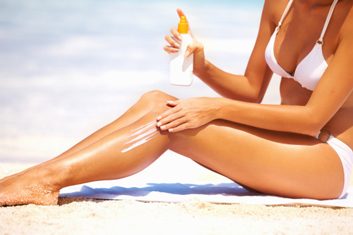
New regulations
This summer, Health Canada is expected to publish a monograph that will provide the basis of new regulations for sunscreen products. If these are passed, anything under SPF (sun protection factor) 15 or without broad-spectrum protection (which blocks both UVA and UVB rays) will in future be required to display a warning that the product “has been shown only to help prevent sunburn, not skin cancer or early skin aging.” Products with an SPF greater than 50 must be labelled as “SPF 50+”; it will no longer be acceptable to state a higher SPF number. Why? Says Health Canada media relations officer Sara Lauer: “We do not have adequate data demonstrating that products with SPF values higher than 50 provide additional protection compared to products with SPF values of 50.” Also, claims considered misleading, such as “sunblock” and “waterproof,” will be disallowed. Many of these changes will align our rules with those already adopted in the U.S. and Europe, making it easier for international companies to market and sell their sunscreen products in multiple countries.
Skin cancer rates continue to rise, killing close to 1,000 Canadians a year, despite very public campaigns about the dangers of sun exposure. (The Canadian Cancer Society [CCS] estimates 6,000 Canadians will be diagnosed with melanoma in 2013, and 1,050 will die from it.) According to Gillian Bromfield, director of cancer control policy at the CCS, that’s partly because many people being diagnosed with skin cancer today are paying the price for the sunbathing they did 20 years ago. (Sun worshippers, are you listening?) But it’s also hard to fix a bad habit. “Even if awareness is up, behaviour change takes time,” Bromfield says.
Although there are a number of strategies we’re encouraged to use for sun protection, Bromfield says, “research has already shown that the proper use of sunscreens reduces skin cancer risk.” It can also prevent premature skin aging.
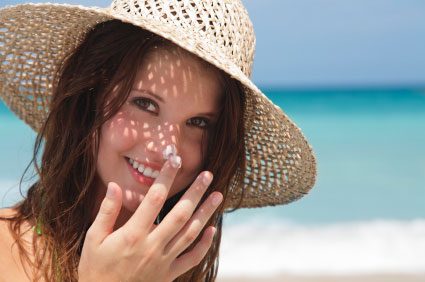
Encouraging compliance
To do its job, sunscreen needs to be applied often, and in sufficient amounts. People may be less likely to use the product properly if it feels greasy, if they don’t care for the scent or if it sits like a white coating on top of their skin. According to the Canadian Dermatology Association, surveys show that even while attitudes toward sunscreen have become more positive over the years, our actual use of sunscreen products has remained low to moderate.
Previous less-than-inviting features of sunscreen have been a stumbling block in the beauty business. “There has been a great deal of effort in the industry to produce sunscreens that give maximum protection and are appealing to the consumer,” says Darren Praznik, president and CEO of the Canadian Cosmetic, Toiletry and Fragrance Association (CCTFA), adding: “I think you will see that in more and more products. It’s a growing market.”
Here are six ways sunscreens have evolved to encourage us to use them.
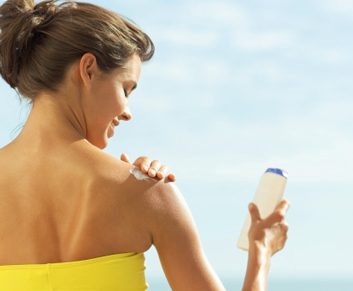
1. How sunscreen feels
The Evolution: Formulas that feel lightweight and non-greasy, and don’t clog pores
Texture is a key factor in deciding whether we will wear sunscreen every day-or not, says Donna Paty, national education manager for Kiehl’s Canada. “If people find it too heavy and greasy, if it doesn’t feel comfortable under makeup, that’s probably the biggest reason why they’re not wearing it.” Manufacturers today are lightening up, literally, finding ways to thin the oil ingredients and using more lightweight formulas. “If people are comfortable with the texture,” Paty adds, “they are more likely to use it, and they’re likely to use it more frequently.”
Examples:
• NeoStrata SPF 45 Lotion is a light, non-comedogenic non-greasy lotion with “physical” sunscreens. ($30, 50 mL)
• Vichy Capital Soleil Sheer Lotion SPF 45 Bare Skin Feel Face and Body lotion with sunscreen filter Mexoryl XL has a superior dry-touch finish. ($30, 150 mL)
• Kiehl’s Super Fluid UV Defense SPF 50 is an oil-free lightweight facial sunscreen that works well under makeup. ($36, 50 mL)
• Ombrelle Ultra-Fluid SPF 60 Lotion For Face is thin and fast-absorbing, and is intended for everyday use under makeup. ($17, 50 mL)
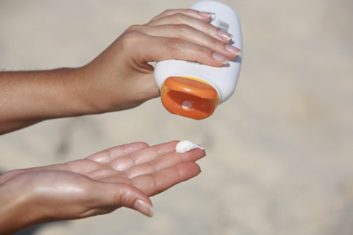
2. How sunscreen looks
The Evolution: Finishes that are matte (non-glossy) and transparent
Many of today’s sunscreens are unobtrusive. For one thing, companies are finding ways to pulverize ingredients in tiny micro- or nano-size particles in mineral-based “physical” sunscreens; these are products that use titanium dioxide and zinc oxide as active ingredients. “They’re fine-tuning the texture so you’re getting the protection, but you’re not walking around with a white or grey face,” says Paty. (Health Canada considers nano-sizes of titanium dioxide and zinc oxide to be acceptable.)
Examples:
• La Roche-Posay Anthelios SPF 30 melt-in formula fades from white to barely there as it absorbs. ($28, 100 mL)
• RoC Soleil Protexion+ Velvet Moisture SPF 30 offers high-performance sunscreen protection in a milky spray that is invisible once dry. ($26, 200 mL)
• Lise Watier Sun Smart Universal UV Shield SPF 30 touts its invisible physical sunscreens. ($39, 30 mL)
• Neutrogena Pure & Free SPF 50 for sensitive skin, with physical sunscreen, is fragrance-free and spreads easily. ($18, 73 mL)
• SkinCeuticals Physical Fusion UV Defense SPF 50 for the face with physical sunscreens is sheer, mattifying and tinted. ($39, 50 mL)
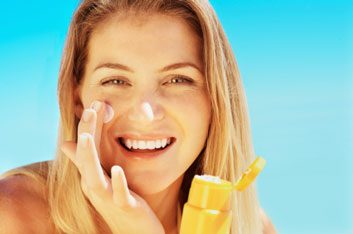
3. How and where it goes
The Evolution: A variety of application methods such as continuous sprays and sticks; and products designed for specific areas of the body
Sunscreens that can be applied with minimum mess and fuss are gathering steam. Smaller containers mean easier portability, plus you’re more likely to get through the bottle before the formula starts to break down in, say, an overheated beach bag or car.
Skin cancer often strikes the body parts we don’t think to protect, such as the lips, tops of ears, décolleté and backs of hands. But not all skin is the same. With that in mind, consumers are now offered special care for specific areas.
Examples:
• Elizabeth Arden Nourishing Lip Balm SPF 20 nourishes lips with vitamins and minerals while it protects. ($23, 15 mL)
• Life Brand Sunthera3 Sport Continuous Spray SPF 30 is quick and easy to apply, and dries in seconds. ($11, 177 mL)
• Nivea Soothing Care SPF 20 for lips is enriched with vitamin E. ($2, 4.8 g)
• Ombrelle Face Stick SPF 60 was developed for sensitive skin. ($17, 9 g)
• Clarins Sun Control Stick SPF 30 with mango butter, sunflower wax and shea butter is recommended for lips, nose, ears and cheekbones. ($34, 8 g)
• Clinique Even Better Dark Spot Correcting Hand Cream SPF 15 offers protection while it helps to even skin tone. ($33, 75 mL)
• Elizabeth Arden Prevage Anti-Aging Triple Defense SPF 50 Sunscreen Sheer Lotion goes on with a built-in brush-good for hard-to-reach areas. ($95, 50 mL)
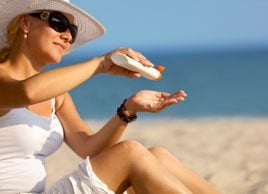
4. How sunscreen smells
The Evolution: Fragrance-free formulas and appealing scents
Increasingly, sunscreen manufacturers leave out the perfumes, since some people complain they cause skin irritation, especially after they’re exposed to sun. Other companies have deliciously scented products you could almost eat. “If you can make a sunscreen that doesn’t have a bad odour to it, you increase its use,” says the CCTFA’s Praznik.
Examples:
• Coppertone Oil Free Face Sunscreen Lotion SPF 60 is fragrance-free. ($12, 88 mL)
• Bioderma Photoderm Cream SPF 60 has an ultra-light texture and is fragrance-free. ($20, 40 mL)
• Hawaiian Tropic Silk Hydration SPF 30 has a signature coconut fragrance. ($11, 180 mL)
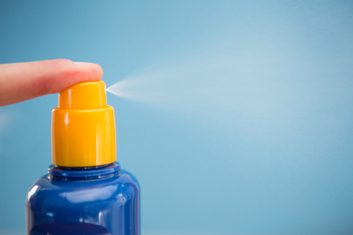
5. How it works
The Evolution: Sunscreens that are formulated in new ways to better protect us
Photostability: “When we use the term ‘photostable’ in relation to our sunscreen products, we mean that the sunscreen filters in the formulation will not be easily broken down by the sun,” says Johnson & Johnson’s Liao.
Water resistance: Other advances in sun protection mean some formulas are less likely to lose their effectiveness when combined with water. (If the new sunscreen regulations come into force, Health Canada will allow companies to make claims like “can be applied directly to wet skin” [or any other “innovative claims,” for that matter] only if they can support it with scientific data.)
Infrared protection: Many formulas contain antioxidants for controlling free radicals and for protection against infrared light, the latest threat when it comes to radiation, suggests current research. Infrared light from the sun can invade the skin more deeply than UVA and UVB rays, and can lead to destruction of the skin plus a possible increase in free radicals. Evidence suggests topical antioxidants can help fight the damage.
Examples:
• Clinique Sun SPF 50 Sunscreen Face Cream contains antioxidants including ferulic acid. ($25, 50 mL)
• Neutrogena Beach Defense SPF 30 Body has photostable technology Helioplex. ($16, 198 mL)
• Avène Eau Thermale High Protection Lotion SPF 40 has Tinosorb photostable protection. ($28, 100 mL)
• La Roche-Posay Anthelios SPF 45 Dry Touch Spray is water-resistant. ($30, 200 mL)
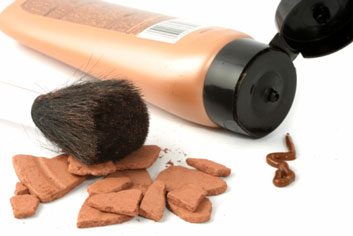
6. What else it does
The Evolution: Sunscreens that do double duty
Many modern-day products are multi-functional. “Some people want to have the protection built into their product, their moisturizer or foundation,” says Kiehl’s Paty. “They don’t want to wear different layers.” No question it’s an added convenience to have sun protection automatically included when you’re going about your facial routine. Some of the new sunscreens also act as moisturizers, control oil, are anti-aging or can be worn as makeup.
Examples:
• Aveeno Protect + Hydrate SPF 30 for Face and Body includes oatmeal for hydration. ($16, 81 mL)
• Aveeno Active Naturals Clear Complexion BB Cream SPF 30 brightens and evens the complexion while protecting. ($23, 75 mL)
• Biotherm SPF 50 Multiprotection sunscreen for the face is boosted with biopeptides to “stimulate collagen synthesis.” ($34, 75 mL)
• Miracle 10 SPF 30 Face is a fragrance-free anti-aging lotion with licorice-root extract. ($52, 50 mL)
• Shiseido Suncare Sun Protection Compact Foundation is a powder foundation with SPF 34. (refill, $35, 12 g; case, $9)
Related:
• 13 new products in sun protection
• 5 foods that fight sun damage
• 9 places you forget to apply sunscreen
